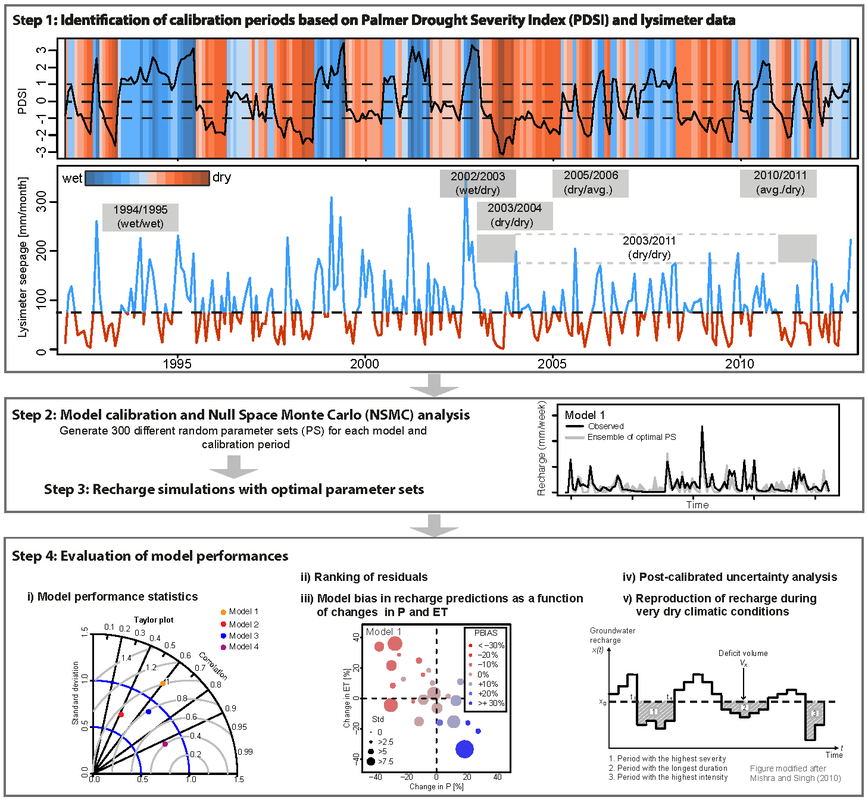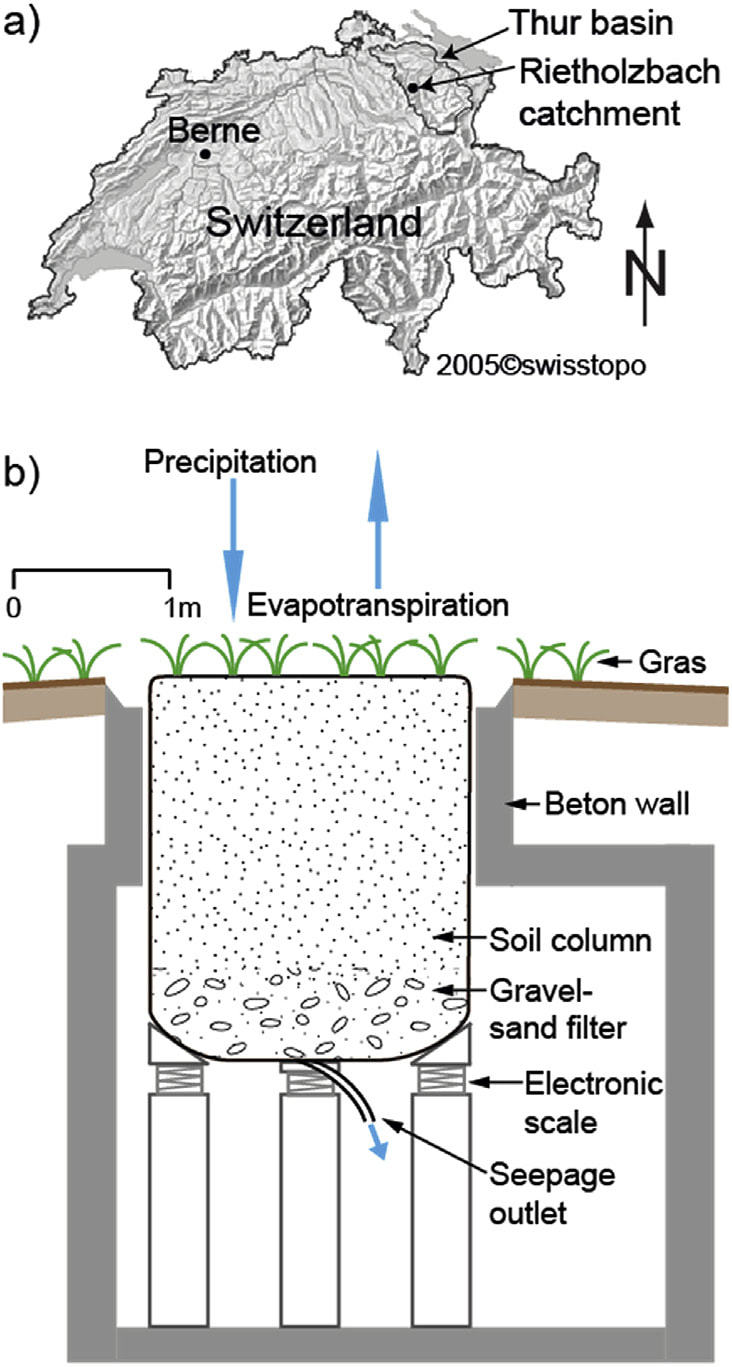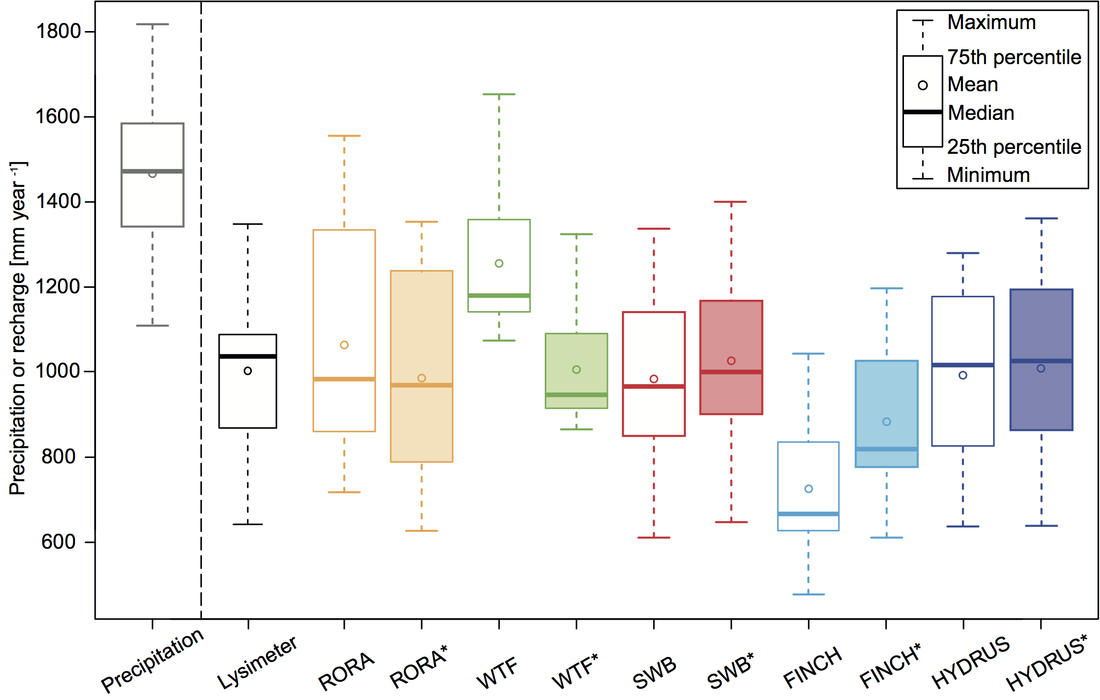A reliable quantification of groundwater recharge (GR) is essential for sustainable water resources management. This can be particularly relevant in regions where an increase in the duration and frequency of drought events is predicted due to future climate change. Although there exists a large variety of GR estimation methods, their results can differ considerably for an individual site due to the patio-temporal scales and complexities they represent. Therefore, it is crucial to evaluate the potential range of GR estimates to allow for consistency and objective inter-comparison of modeling results among different sites. The current study systematically assesses the performance of six frequently used GR estimation methods, which differ in terms of their underlying conceptual framework and complexity. These methods utilize experimental data (lysimeter, river streamflow, groundwater-table variations) as well as soil water-balance and physically-based modeling concepts. 13 years of hydro-climatic data were analysed from the Swiss Rietholzbach research catchment for different temporal resolutions and extreme climatic conditions (i.e., dry periods). The major limitations and strengths of the six GR estimation methods were identified and summarized in a comprehensive overview, which will facilitate the selection of an adequate technique for the estimation of GR in future studies.
Find out more here!
Find out more here!
In a follow-up project, we systematically evaluated the effect of model complexity and calibration strategy on estimated recharge using four varyingly complex models and a unique long-term recharge data set. A differential split sample test was carried out by using six calibration periods with climatically contrasting conditions in a constrained Monte Carlo approach. All models performed better during calibration than during validation due to differences in model structures and climatic conditions. The two more complex, physically-based models predicted the observed recharge with relatively small uncertainties, even when calibration and prediction periods had different climatic conditions. In contrast, the more simplistic soil-water balance model significantly underestimated the recharge rates. The fourth, semi-mechanistic model captured the observed recharge rates, but with a larger uncertainty range than the physically-based models. Our results may have relevant implications for a broad range of applications when recharge models are used as decision-making tools.
Find out more here!
Find out more here!

Workflow of the applied methodology to determine the effects of the calibration period, model choice and model structure (including parameter uncertainty) on vertical
groundwater recharge simulations. Four steps are presented: Step1: Identification of climatically contrasting calibration periods based on the Palmer Drought Severity Index (PDSI)
and lysimeter seepage measurements. Step 2: Model calibration and Null Space Monte Carlo analysis. Step 3: Model simulation for the full groundwater recharge time series, and
parameter uncertainty quantification. Step 4: Evaluation of model performance based on different performance characteristics. From: Moeck, C., von Freyberg, J., and Schirmer, M.: Groundwater recharge predictions in contrasted climate: The effect of model complexity and calibration period on recharge rates, Environ Modell Softw, 103, 74-89, https://doi.org/10.1016/j.envsoft.2018.02.005, 2018.
|
Relevant publications:
|


